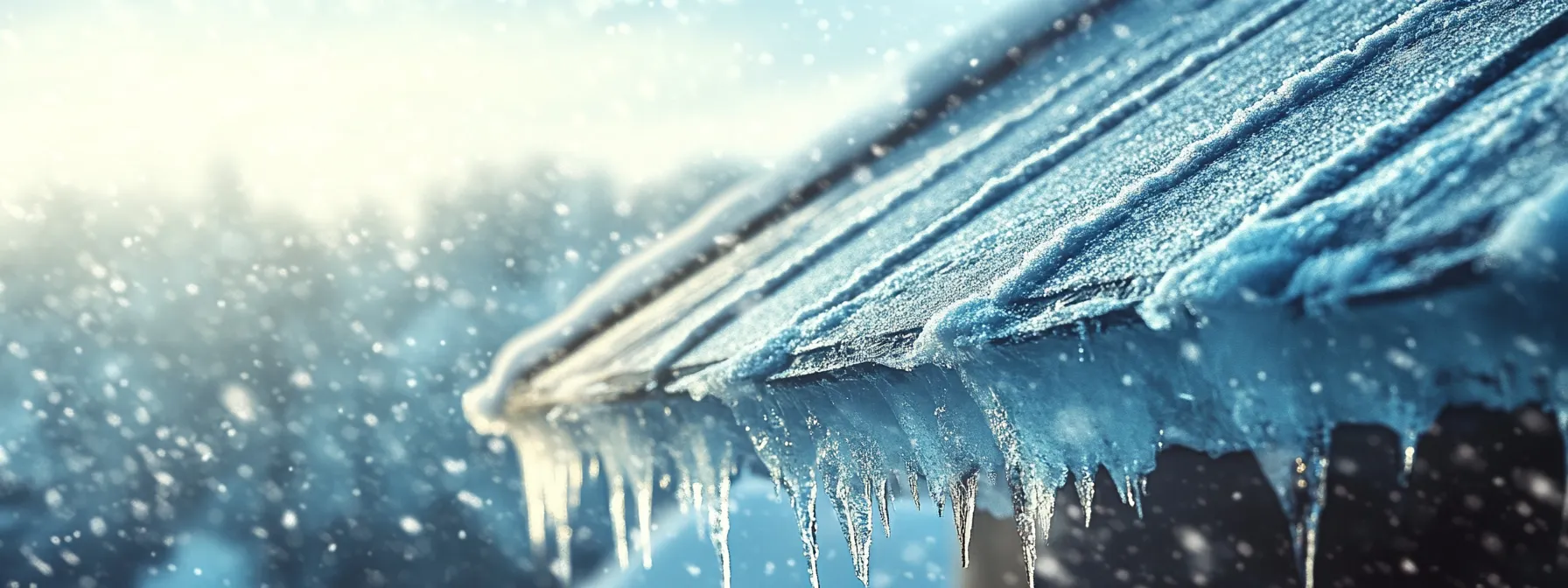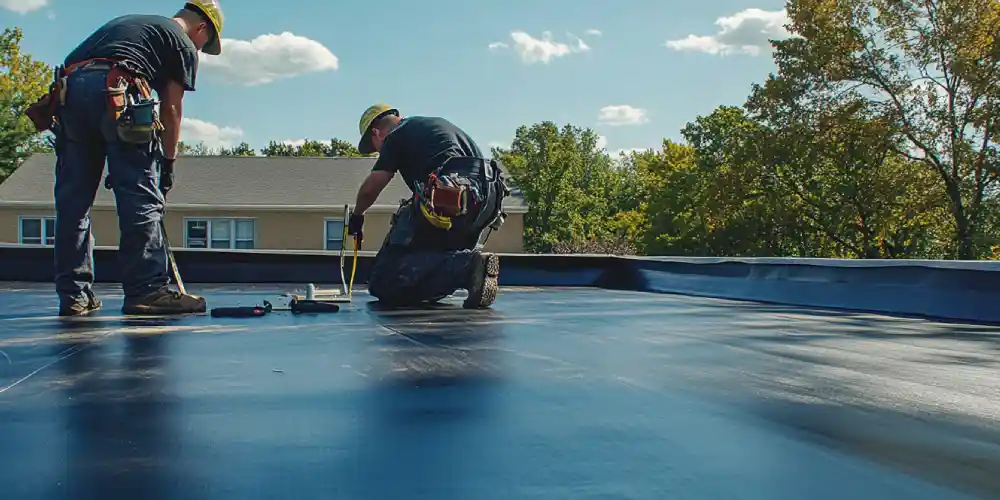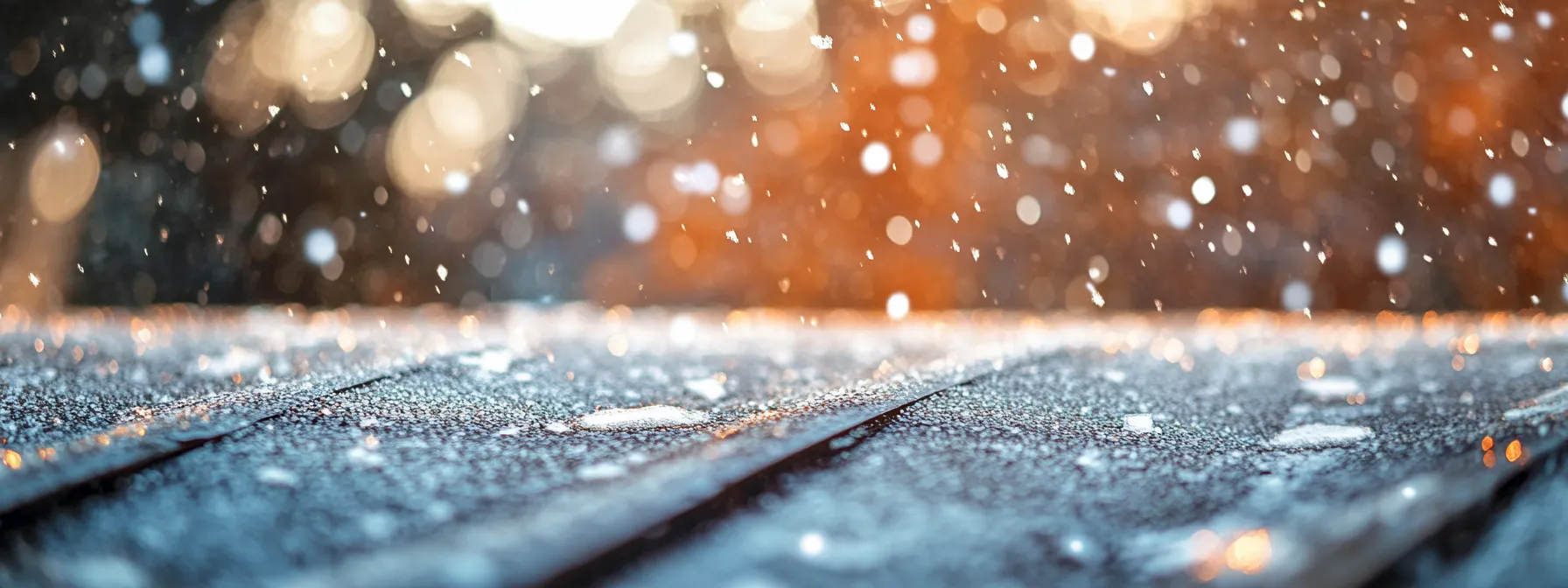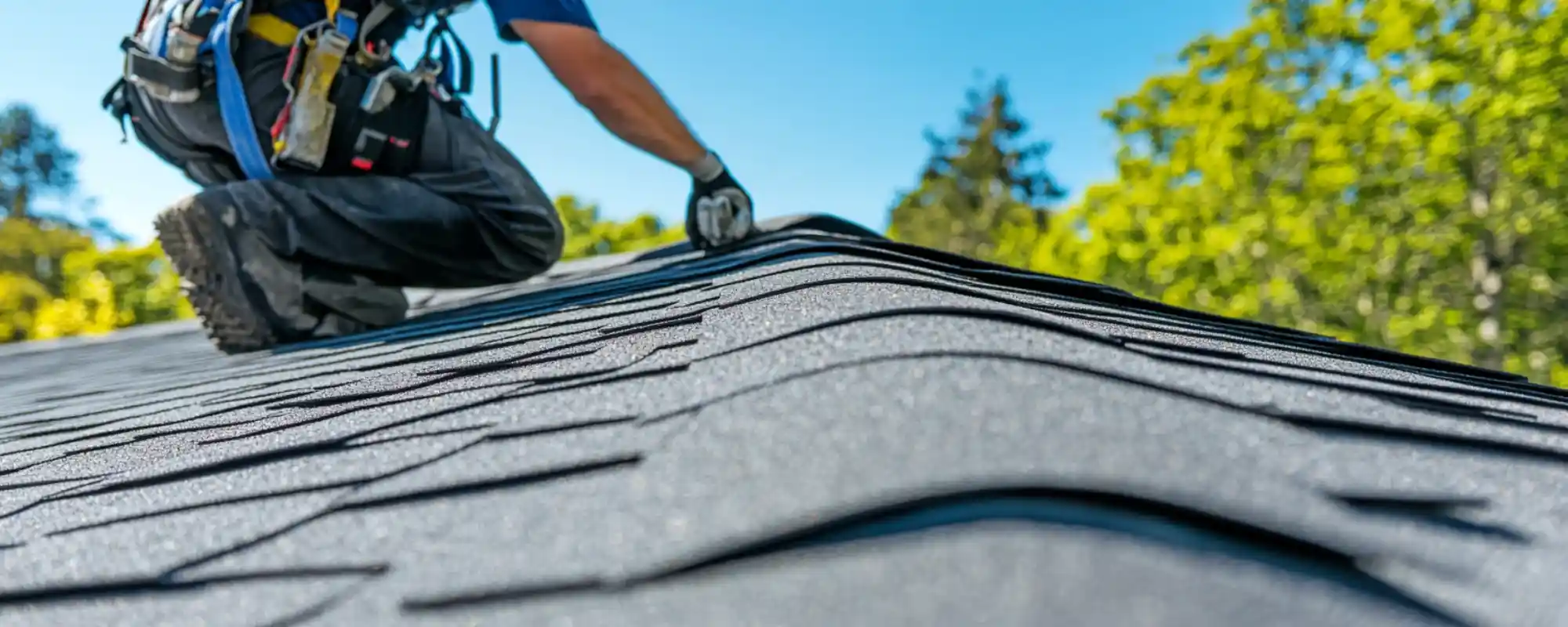Ice Dam Causing Roof Leak: Signs and Immediate Actions
•
Written By
Mint Roofing

As winter approaches in Colorado's Western Slope region, homeowners need to watch out for the formation of ice dams on their roofs. These ridges of ice can lead to costly roof leaks and potential structural damage if left unchecked.
At Mint Roofing, we understand the unique challenges posed by the area's harsh winter conditions, and we're here to help you identify and address ice dam-related roof leaks before they escalate into major issues.
The Dangers of Ice Dams
Ice dams form when heat from the attic warms the roof surface, causing snow to melt and refreeze at the roof's edge. This cycle creates a buildup of ice that can prevent proper drainage, forcing melted water to back up and seep into your home. Left unchecked, ice dams can lead to costly repairs and even compromise the structural integrity of your roof.
Signs of an Ice Dam Causing a Roof Leak
- Icicles Hanging from the Gutters or Roof Edges: While icicles can be a beautiful winter sight, they're often a warning sign of an ice dam forming on your roof. As the ice dam grows, water from melting snow can back up and seep into your home.
- Water Stains, Moisture, or Active Leaks on Ceilings or Walls: Water stains, moisture, or active leaks on ceilings or walls can indicate that an ice dam is allowing water into your home.
- Peeling Paint or Wallpaper: The moisture from an ice dam-related roof leak can cause paint to peel and wallpaper to become loose or discolored, especially in areas near the roof's edge.
- Mold or Musty Odors: Prolonged moisture intrusion due to an ice dam can create the perfect environment for mold growth, leading to musty odors and potential health hazards.
Immediate Actions to Take
If you suspect an ice dam is causing a roof leak, it's crucial to act quickly to minimize further damage. Here are some immediate steps to take:
- Clear the Ice Dam: Using a roof rake or calcium chloride ice melt, carefully remove the ice dam from the roof's edge. Exercise caution, as working on a slippery roof can be dangerous. If you're unable to safely remove the ice dam yourself, it's best to contact a professional roofing contractor.
- Insulate and Ventilate the Attic: Proper insulation and ventilation in the attic can help prevent the formation of ice dams by keeping the roof surface cool and preventing warm air from escaping into the attic space. Consider having a professional assess your attic's insulation and ventilation to ensure it meets recommended standards.
- Contact a Professional Roofing Contractor: If the ice dam has already caused significant damage or if you're unable to safely remove it yourself, contact a reputable roofing contractor like Mint Roofing. Our team of experts can assess the situation, remove the ice dam, and repair any resulting roof leaks or damage.
At Mint Roofing, we understand the importance of addressing ice dam-related roof leaks promptly. Our experienced professionals are equipped to handle even the most challenging winter roofing issues, ensuring your home remains safe and protected throughout the harsh Colorado winters.
Don't let an ice dam cause costly damage to your home. Contact Mint Roofing today for a comprehensive inspection and effective solutions to keep your roof in top condition all winter long.
Recent Articles

Residential Roofing
The Cost of Impact Resistant Shingles in Pagosa Springs, CO: Is It Worth It?
Protecting your Pagosa Springs home from hail and high winds doesn't have to break the bank. Explore the true cost of impact-resistant shingles and whether they're worth the investment.

Commercial Roofing
The Best Time of Year to Replace a Commercial Roof: Factors to Consider
Replacing a commercial roof is a major investment, and timing is crucial. Explore the best time of year to replace your commercial roof and the key factors to consider.

Residential Roofing
The Best Roofing for Hail in Colorado: Protecting Your Investment
Hail can wreak havoc on Colorado roofs. Discover the best roofing solutions to safeguard your home and investment from the region's unpredictable weather. Our experts provide the insights you need.

Roofing Contractors
Class 3 vs Class 4 Shingles in Colorado: Understanding Impact Resistance
Homeowners in Colorado know that impact-resistant roofing is crucial. Explore the key differences between Class 3 and Class 4 shingles to find the best protection for your home.



